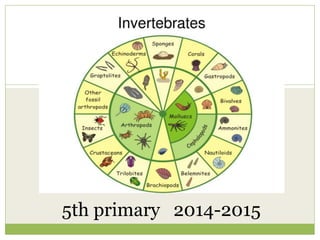Insects are arthropods that live on land, can fly, and walk with 6 legs. They have compound eyes, 6 legs, and 4 wings. They breathe through trachea and reproduce both sexually and asexually, sometimes undergoing metamorphosis. Other arthropods discussed include spiders, which have 8 legs and eyes and spin webs, and crustaceans like crabs that live in water or on beaches.





























































